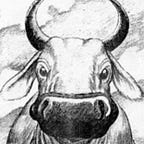Azerbaijan — Ali and Nino
Someone wrote a book once, of that much I am certain
I was intrigued when I heard about Ali and Nino and knew that while I probably should have looked for something more contemporary I wanted to read it.
It was published in German in Austria in 1937 under the pseudonym Kurban Said (literally: happy sacrifice). The true authorship is still somewhat disputed but something of a consensus appears to be forming that it was, at least mostly, the work of Yusif Vazir Chamanzaminli. He was an Azeri novelist and attempted diplomat (a political leader in the short lived Azerbaijan Democratic Republic (1918–1920) he tried and failed to establish diplomatic relations first with the near-equally short lived Ukrainian People’s Republic (1917–1921) and then with Turkey). He spent some time in exile in Paris, but by 1937 was back in Azerbaijan and in one of Stalin’s gulags — where he died. It’s also not at all clear that he spoke German, so while there is emerging consensus that he wrote it there are multiple theories with respect to when and how.
It also seems some form of role — whether that of junior co-author, interventionist editor, or simply translator — was played by “Essad Bey”. That too is a pen name, of Lev Nussimbaum. He was born in Kyiv to a Jewish family and then may (or may not) have spent much of his early adulthood travelling around Turkey and Persia (and possibly Azerbaijan) where he may (or may not) have converted to Islam. In the 1920s he moved to Germany from where the Nazis chased him first to Austria (where he was in 1937) and then to Italy where he died young of a rare blood disorder before the holocaust reached Italy in earnest.
Nussimbaum/Bey was briefly a literary sensation, having established himself as among the leading experts on the mysterious orient, certainly in the German speaking world. However, much of his incredibly prolific output turned out to be either fabricated or plagiarised (largely from obscure works or those not available in translation) and his reputation plummeted almost as fast as it had risen.
As a consequence of these contested origins, opinions on the book are highly polarised. Some claim it as Azerbaijan’s greatest ever novel, others as orientalist garbage written by someone who had never been to Azerbaijan and had no connection to the country whatsoever. I haven’t looked into these arguments in detail as I wanted be able to give the text a fair shake.
As for the book: it is quite crass. It’s trite, heavy handed, simplistic, and what the kids would call problematic. All that said, none of those things prevent it from being really quite a lot of fun.
It is also written as the first person narrative of a teenager and, as such, the crassness itself gives it a sort of verisimilitude. When it comes to the Azerbaijan of 1917 I have no idea if it is realistic or not, and it does rather read like an orientalist fantasy, but when it comes to how teenage boys think and talk it does feel authentic, in places almost like the back half of Portrait of the Artist.
I did wonder if we might see the book use this device to address one of its more jarring elements: our protagonist’s views towards women start out cartoonishly appalling, so much so indeed that one feels we are building towards some sort of heavy handed point. But actually that’s not quite it. At the end of our book the protagonist still thinks and feels all the things he thought and felt at the beginning. But he’s also decided that his opinions and beliefs are just less important to him than a happy family. In no way at all is he internally reformed by love, but love does cause him to decide that putting his thoughts into action would come at too high of a cost. The moral turns out not to be “women are human beings too” but “life is short and misogyny is bloody hard work, so maybe don’t bother.”
There’s a couple of other small ways in which expectations (many of them doubtless rooted in stereotypes of Eastern and/or Western narratives) are subverted too, and it’s enough that you feel like you’ve read something at least a little bit original. Which is frankly quite an achievement for what in plot terms might be the most generic story ever told.
And while much of the prose is just functional, in one or two small places it has a real flair. He’s a lovely description of a new parent’s fixation on their newborn:
So I sat in my office in the Ministry, and she would graciously phone me to tell of great events and revolutionary deeds: ‘Ali Khan, the Toy had laughed, and it’s spreading its hands towards the sun.’ ‘It’s a very clever Toy, Ali Khan, I showed it a glass ball, and it really looked at it.’ ‘Listen, Ali Khan, the Toy is drawing lines on its stomach with its fingers. It seems to be a very talented Toy.’
So is this mysterious book good? bad? racist? I’m honestly not sure. It’s quite an entertaining few hours though.
